In Oracle, (+) denotes the "optional" table in the JOIN. So in your query,
SELECT a.id, b.id, a.col_2, b.col_2, ...
FROM a,b
WHERE a.id=b.id(+)
it's a LEFT OUTER JOIN of table 'b' to table 'a'. It will return all data of table 'a' without losing its data when the other side (optional table 'b') has no data.

The modern standard syntax for the same query would be
SELECT a.id, b.id, a.col_2, b.col_2, ...
FROM a
LEFT JOIN b ON a.id=b.id
or with a shorthand for a.id=b.id (not supported by all databases):
SELECT a.id, b.id, a.col_2, b.col_2, ...
FROM a
LEFT JOIN b USING(id)
If you remove (+) then it will be normal inner join query
Older syntax, in both Oracle and other databases:
SELECT a.id, b.id, a.col_2, b.col_2, ...
FROM a,b
WHERE a.id=b.id
More modern syntax:
SELECT a.id, b.id, a.col_2, b.col_2, ...
FROM a
INNER JOIN b ON a.id=b.id
Or simply:
SELECT a.id, b.id, a.col_2, b.col_2, ...
FROM a
JOIN b ON a.id=b.id

It will only return all data where both 'a' & 'b' tables 'id' value is same, means common part.
If you want to make your query a Right Join
This is just the same as a LEFT JOIN, but switches which table is optional.

Old Oracle syntax:
SELECT a.id, b.id, a.col_2, b.col_2, ...
FROM a,b
WHERE a.id(+)=b.id
Modern standard syntax:
SELECT a.id, b.id, a.col_2, b.col_2, ...
FROM a
RIGHT JOIN b ON a.id=b.id
Ref & help:
https://asktom.oracle.com/pls/asktom/f?p=100:11:::::P11_QUESTION_ID:6585774577187
Left Outer Join using + sign in Oracle 11g
https://www.w3schools.com/sql/sql_join_left.asp


